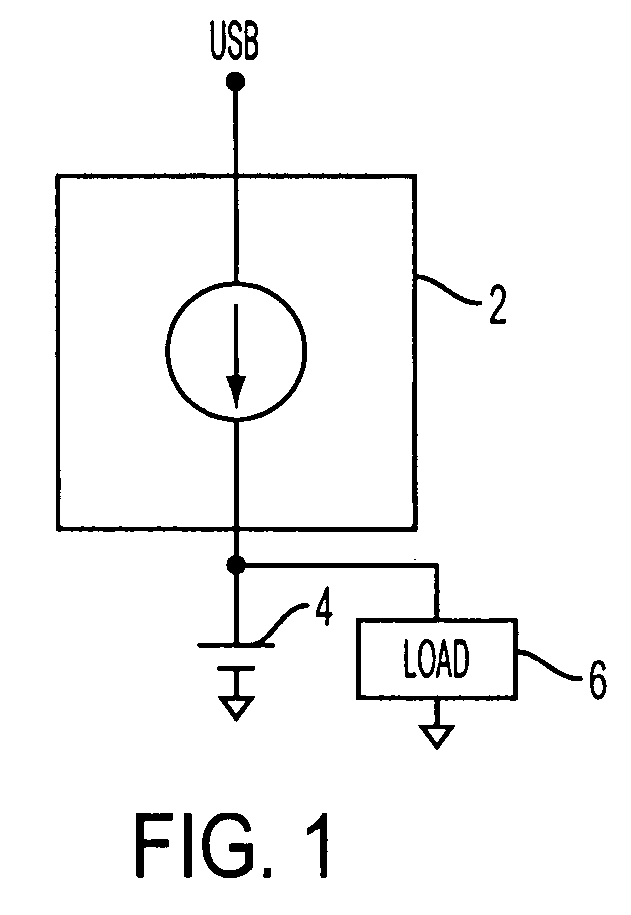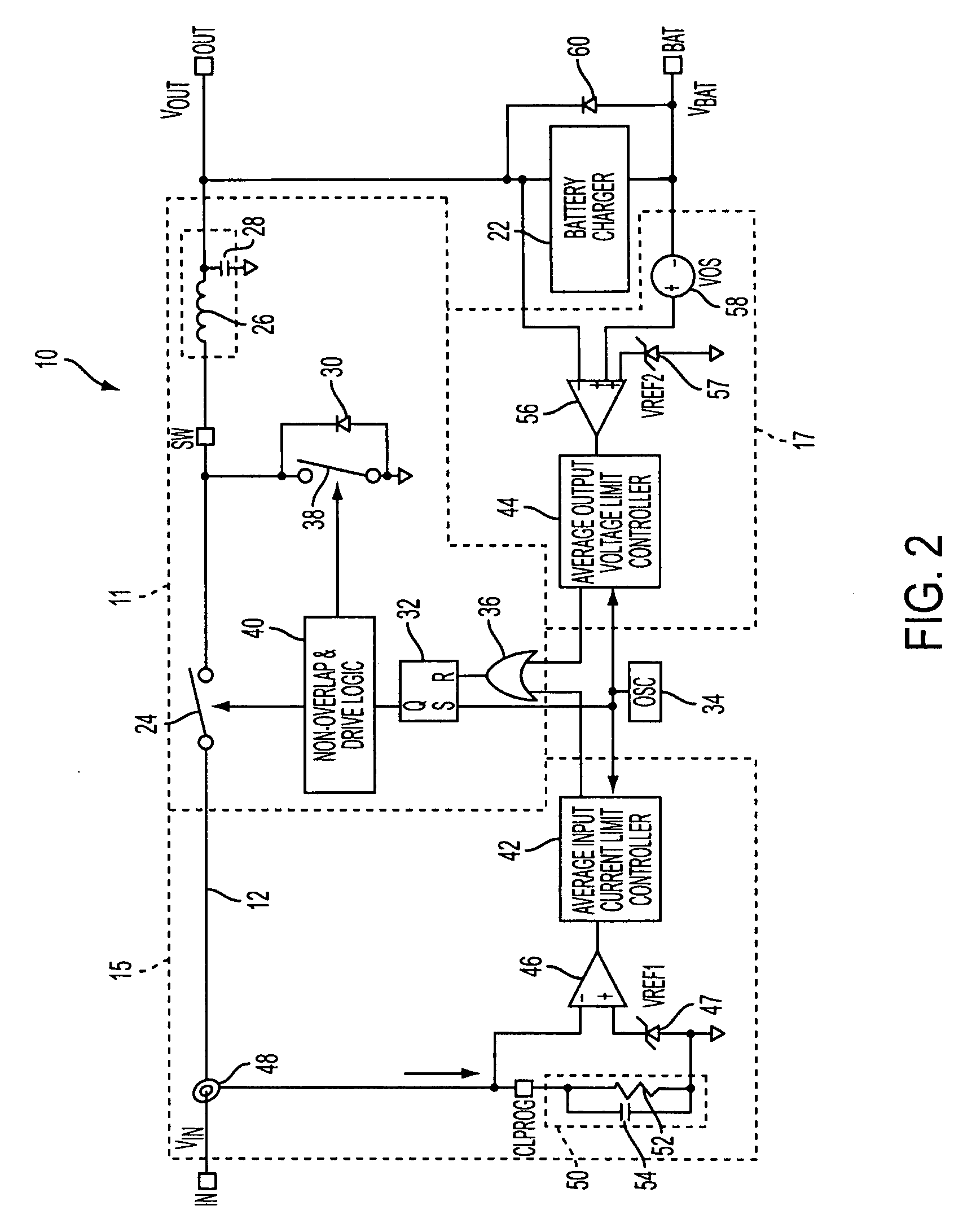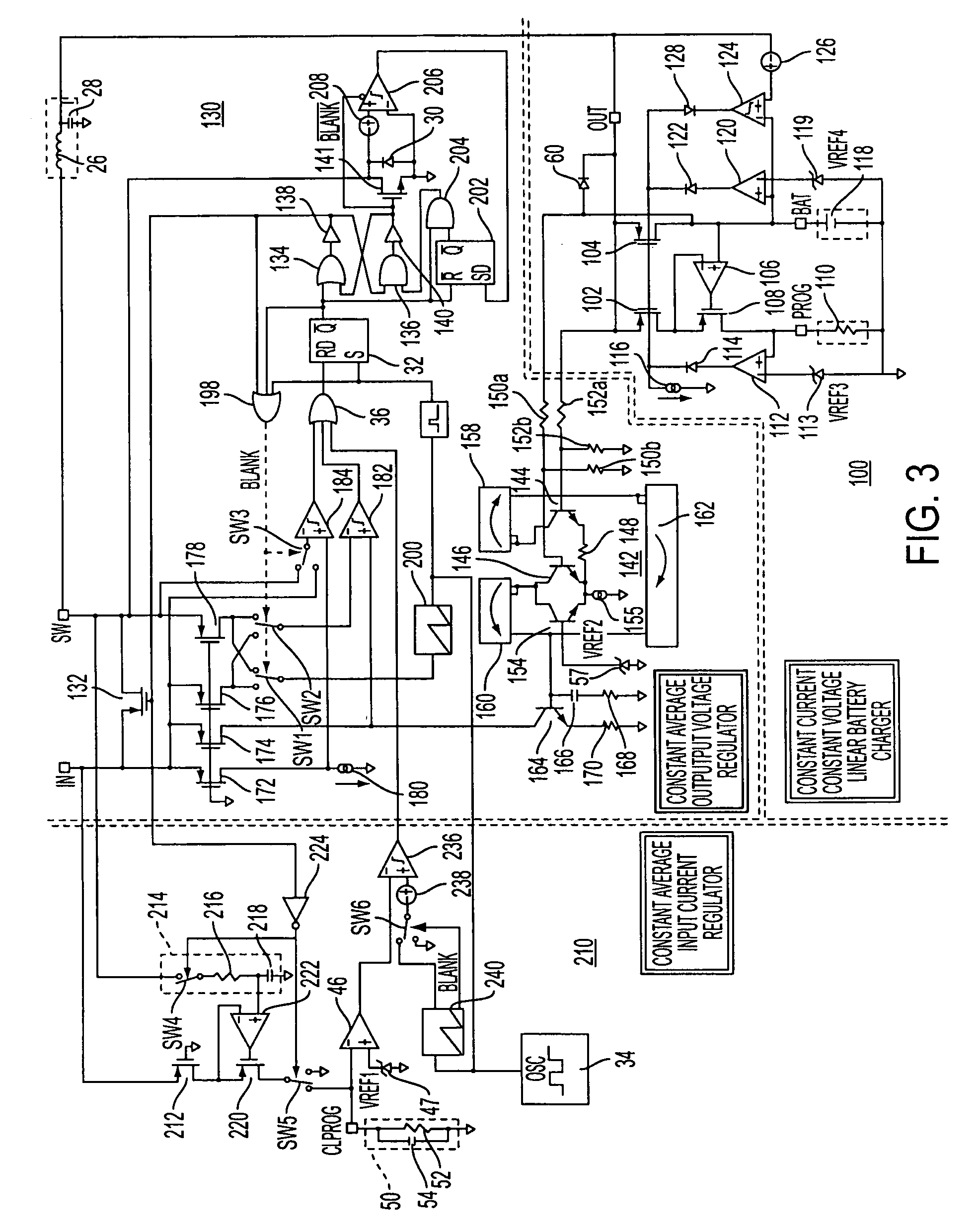Power manager and power managing method for battery-powered application
- Summary
- Abstract
- Description
- Claims
- Application Information
AI Technical Summary
Benefits of technology
Problems solved by technology
Method used
Image
Examples
Embodiment Construction
[0015]FIG. 2 illustrates one embodiment of a power manager for battery-powered applications. The power manager explained herein can provide efficient use of available input power under all load and battery conditions, and reduction in power dissipation of a battery charger. Power manger 10 may be, but is not necessarily, formed on a single chip.
[0016] A power manager 10 in FIG. 2 may include a circuit path 12 having an IN pin and an OUT pin. A wall adaptor or a source whose current is to be constrained such as a USB may be connected to the IN pin, and a load is tied to the OUT pin. A BAT pin, to which a battery is connected, is coupled to circuit path 12 through a battery charger 22. In this topology, the load is directly tied to circuit path 12, whereas the battery is not directly tied to the path.
[0017] Power manager 10 may be configured to drive the load from an available source of power, and simultaneously charge the battery with any available leftover current from the source....
PUM
 Login to View More
Login to View More Abstract
Description
Claims
Application Information
 Login to View More
Login to View More - R&D
- Intellectual Property
- Life Sciences
- Materials
- Tech Scout
- Unparalleled Data Quality
- Higher Quality Content
- 60% Fewer Hallucinations
Browse by: Latest US Patents, China's latest patents, Technical Efficacy Thesaurus, Application Domain, Technology Topic, Popular Technical Reports.
© 2025 PatSnap. All rights reserved.Legal|Privacy policy|Modern Slavery Act Transparency Statement|Sitemap|About US| Contact US: help@patsnap.com



